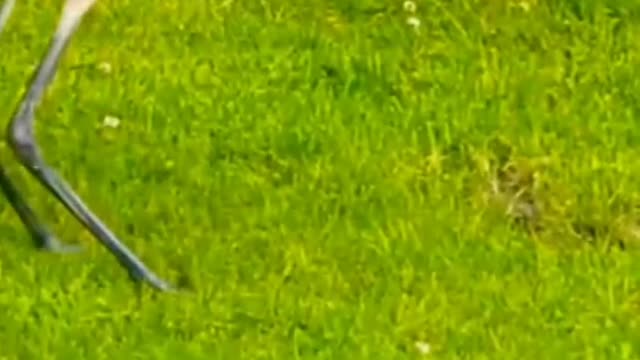Premium Only Content

Heron attacked rat😲.
Heron attacked rat😲.
The herons are medium- to large-sized birds with long legs and necks. They exhibit very little sexual dimorphism in size. The smallest species is usually considered the dwarf bittern, which measures 25–30 cm (10–12 in) in length, although all the species in the genus Ixobrychus are small and many broadly overlap in size. The largest species of heron is the goliath heron, which stands up to 152 cm (60 in) tall. The necks are able to kink in an S-shape, due to the modified shape of the cervical vertebrae, of which they have 20–21. The neck can retract and extend and is retracted during flight, unlike most other long-necked birds. The neck is longer in the day herons than the night herons and bitterns. The legs are long and strong and in almost every species are unfeathered from the lower part of the tibia (the exception is the zigzag heron). In flight, the legs and feet are held backwards. The feet of herons have long, thin toes, with three forward pointing ones and one pointing backwards.
The Pacific reef heron has two colour morphs, the light and the dark.
The bill is generally long and harpoon-like. It can vary from extremely fine, as in the agami heron, to thick as in the grey heron. The most atypical bill is owned by the boat-billed heron, which has a broad, thick bill. The bill and other bare parts of the body are usually yellow, black, or brown in colour, although this can vary during the breeding season. The wings are broad and long, exhibiting 10 or 11 primary feathers (the boat-billed heron has only nine), 15–20 secondaries, and 12 rectrices (10 in the bitterns). The feathers of the herons are soft and the plumage is usually blue, black, brown, grey, or white, and can often be strikingly complex. Amongst the day herons, little sexual dimorphism in plumage is seen (except in the pond-herons); differences between the sexes are the rule for the night herons and smaller bitterns. Many species also have different colour morphs. In the Pacific reef heron, both dark and light colour morphs exist, and the percentage of each morph varies geographically. White morphs only occur in areas with coral beaches.
-
 29:27
29:27
JohnXSantos
17 hours agoHow To Start a CLOTHING BRAND on a BUDGET! ($100) Step X Step Guide
5 -
 3:07
3:07
Memology 101
11 hours ago $0.23 earnedImagine having the AUDACITY to defend this SH*T...
49712 -
 11:13
11:13
MattMorseTV
18 hours ago $42.50 earnedRINO PLOT just got SHUT DOWN.
48.6K143 -
 31:07
31:07
Camhigby
3 days agoLeftist Claims Gender Goes By Identity, Then FLOUNDERS When Asked This Question!
139K81 -
 LIVE
LIVE
Shield_PR_Gaming
3 hours ago11/22/25 I Let's Level up on Battlefield and other games as well!
280 watching -
 10:21
10:21
MetatronGaming
10 hours agoI spent $200 for this Premium PS5 Controller. Is it worth it?
9.27K7 -
 13:46
13:46
Nikko Ortiz
18 hours agoYour Humor Might Be Broken...
41.9K5 -
 1:20:58
1:20:58
CopperheadRoadPodcast
1 day agoEPISODE 91: DAVE SMITH HAS A TRIGGERNOMETRY PROBLEM! GUEST Larry Oberheu
37 -
 26:35
26:35
The Bryce Eddy Show
20 hours agoDaniel Harmon: The Storytelling Genius Behind Tuttle Twins
36 -
 46:47
46:47
The Heidi St. John Podcast
1 day agoFan Mail Friday: Holding the Line in a Divided Culture
89